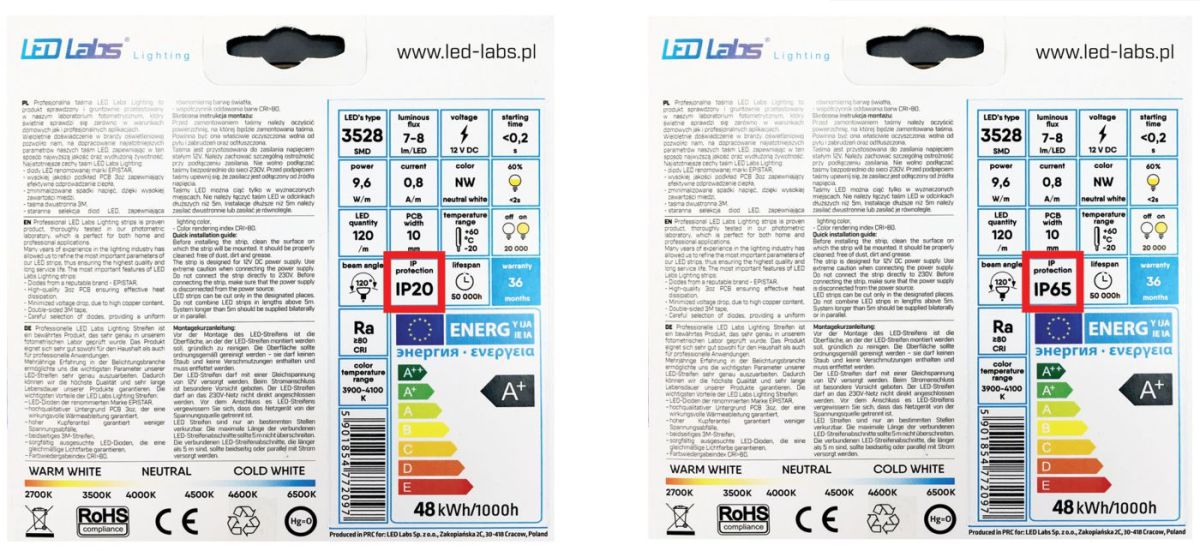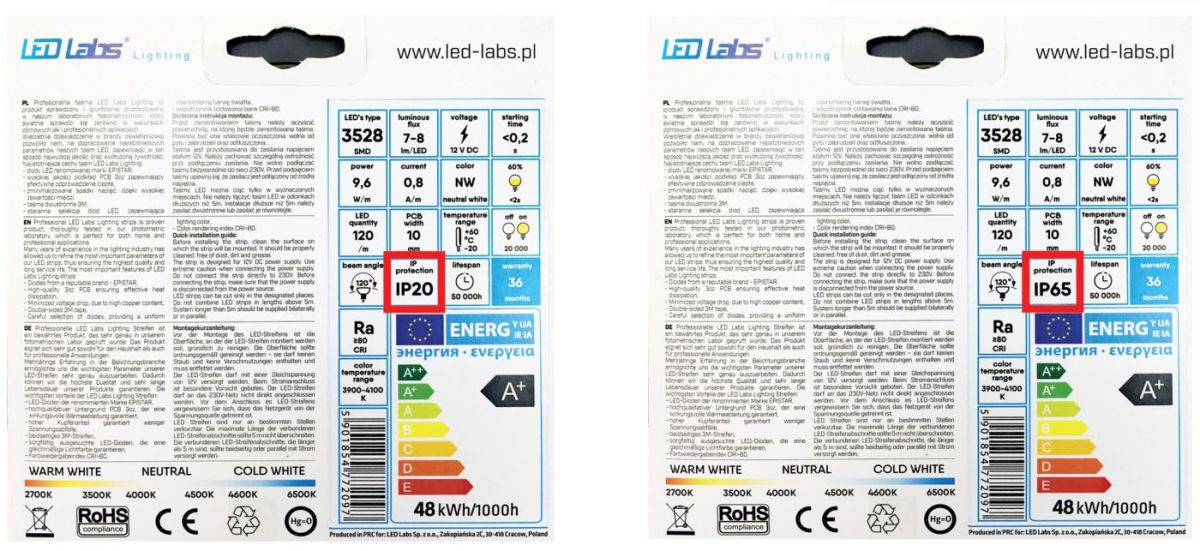LED strip – What does the IP rating tell us?
The degree of waterproof LED strips
It is a measurement of the protection an item will have against solid objects (dust, sand, dirt, etc.) and liquids. How waterproof the LED strips are is determined by the "IP" (Ingress Protection) rating. It indicates the degree of protection provided by the housing of an electrical device against the ingress of foreign solid objects or the harmful effects of water ingress.
In the context of LED strips, we show the IP rating, while colloquially referring to the LED strip as waterproof or non-waterproof.
Some theory::


0 - No protection.

1 - Protection against dripping water.

2 - Protection against falling water drops when the housing is tilted at an angle of up to 15° from vertical in any direction.

3 - Protection against water spray at any angle of up to 60° from vertical in any direction.

4 - Protection against splashing water from any angle.

5 - Protection against water jets (12.5 l/min.) poured on the housing from any angle.

6 - Protection against strong water jets (100 l/min.) poured on the housing from any angle.

7 - Protection against the effects of short-term immersion in water (30 min. to a depth of 0.15 m to 1 m).

8 - Protection against the effects of continuous immersion in water (full immersion in water, under conditions agreed between the manufacturer and the user, but certainly greater than the conditions specified by number 7).
The first digit indicates the degree of protection of the housing against access of foreign solids to sensitive parts located inside. The second digit indicates the degree of protection of the housing against water ingress.
When should you use an LED strip with a higher IP rating
As far as a waterproof strip is concerned, we mean a LED strip covered with a special gel or other resin material, which is designed to protect the LEDs and the electronic circuit along the entire section from water or moisture ingress. A waterproof strip, commonly defined as IP65 (and higher), is used, for example: in bathrooms, under a bathtub or washbasin, or above a work surface in the kitchen.
When buying an LED strip, you should consider whether it will be exposed to high humidity and/or regular immersion water. If the probability is fairly low, we advise you to purchase a non-waterproof strip.
Almost every electronic product connected to a power source heats up, and also has a limited resistance to heat. This is also the case with LEDs, and integrated circuits placed in the strip are no exception. Gel-coated LED strips are more prone to a decrease in the efficiency of LEDs and an accelerated ageing process associated with a reduction in service life faster than in the case of a non-waterproof strip.
How to extend the life of the strip?
Before buying, it is worth considering the selection of the appropriate LED strip, profile and cover. A wide diversity in the range of LED profiles allows for unique aesthetic effects, and also allows for the selection of specifically adapted products that have a greater potential for longer use.


 0
0